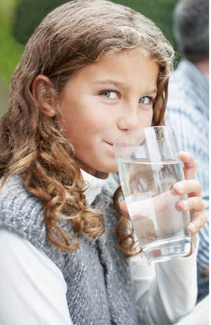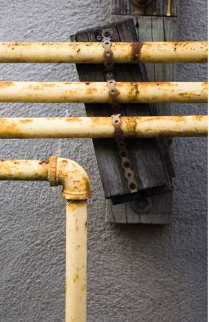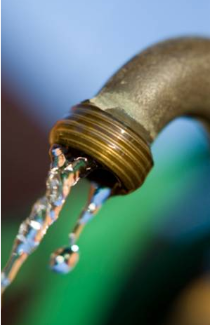Possibly a more important question is: why should you filter your home drinking water and not let it exclusively up to local services to provide safe water?

Lead is one of the biggest concerns these days and it is not easy to remove it from our drinking water. Most of it comes from underground pipes in the distribution infrastructure or from pipes and faucets in our own homes.
Most municipal water treatment facilities are doing a good job at providing safe water. If you consider that there are hundreds of contaminants that can show up in our water, including industrial pollutants, agricultural chemicals, and by-products from disinfection, it’s impressive that we do have safe drinking water.
When we look at the big picture, municipal water supplies in the United States are probably the best in the world. They deliver millions and millions of gallons of treated, safe drinking water every single day to homes all over the country. They are compliant with current regulations almost always.
The other part of the story is that our water could be healthier. While there are less than 100 contaminants that are regulated, there are thousands of chemicals that are not monitored and could be in your water supply. So it is not only lead that we need to be thinking about when we look for healthy drinking water. Tomorrow we may hear about another chemical that may have been in our water supply for years, and (oops we just discovered it) might be hurting us.
When less than 3% of our sanitary water is used for drinking and cooking, and the cost to filter 100% of the water we use for every single chemical would be significantly higher than present costs, it is understandable that local areas would not be able to afford the task. And consumers would not like paying twice as much for a gallon of water, for example, as they do for a gallon of gas.

Next there is the distribution factor to consider. Water is treated at a central location where it is monitored and regulated to meet legal levels for safe drinking water. After that the water has to pass through distribution systems that get it through underground pipes and into your home plumbing. New contaminants can be reintroduced back into the water during this process.
So we see that not all chemicals are regulated and we have the distribution factor. These are two big reasons why individuals and families at least need to be informed and able to make their own choices in their next step: 1) have your own home water filtration, or 2) choose to be satisfied with the water the way that it enters your home.

If you choose to add another line of defense before you drink that next glass of water, the lowest barrier to filtered water would be a one time expense of a water pitcher and then generally less than $10 per month to replace filters. There are other options as well, including reverse osmosis and various under the counter home water filtration systems.
Many brands of water pitchers do not remove lead and other chemicals or contaminants that you desire to filter. You must do your research and find one of very few brands that will filter lead especially. A future article will discuss how water pitcher filter technology has advanced.
